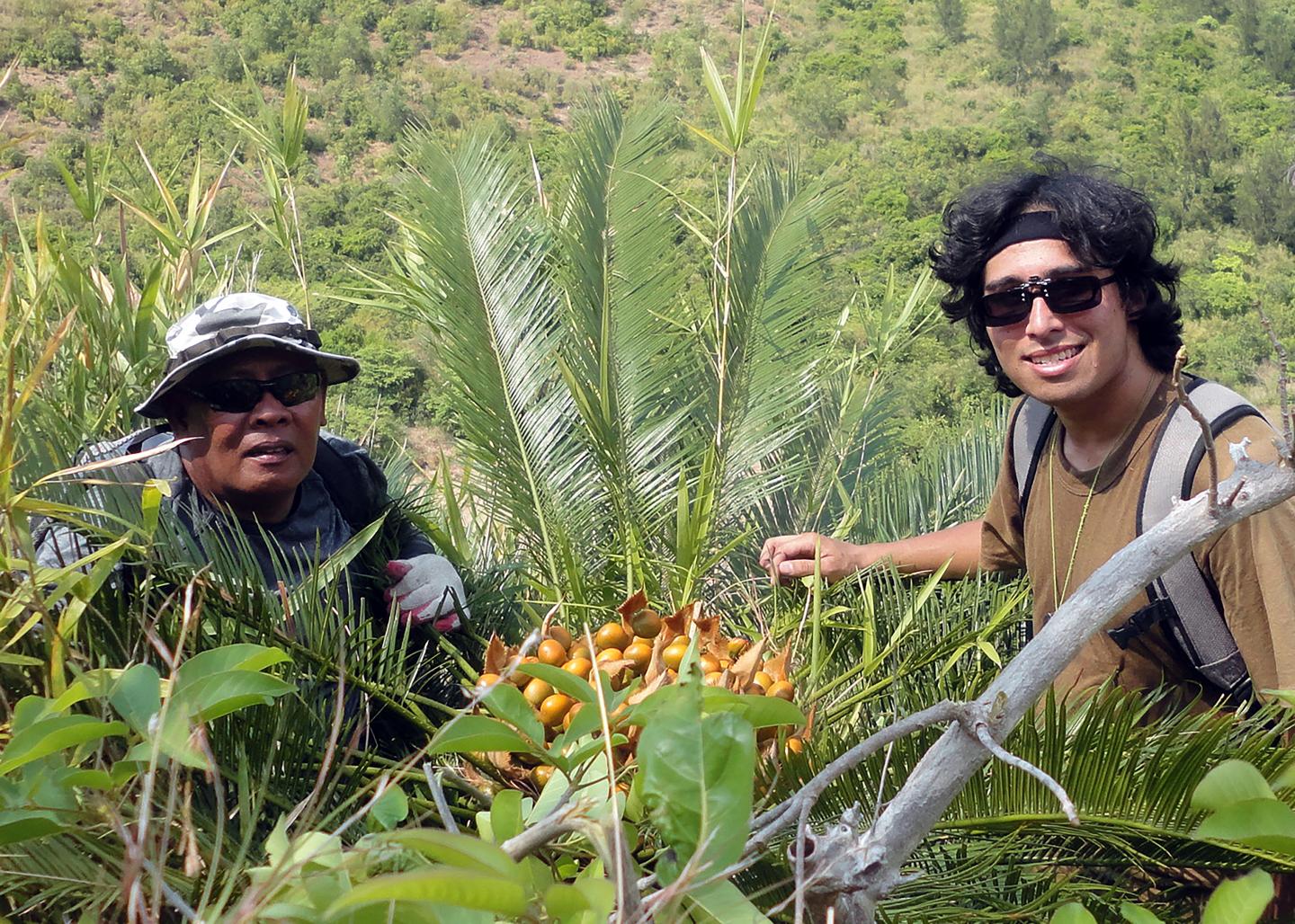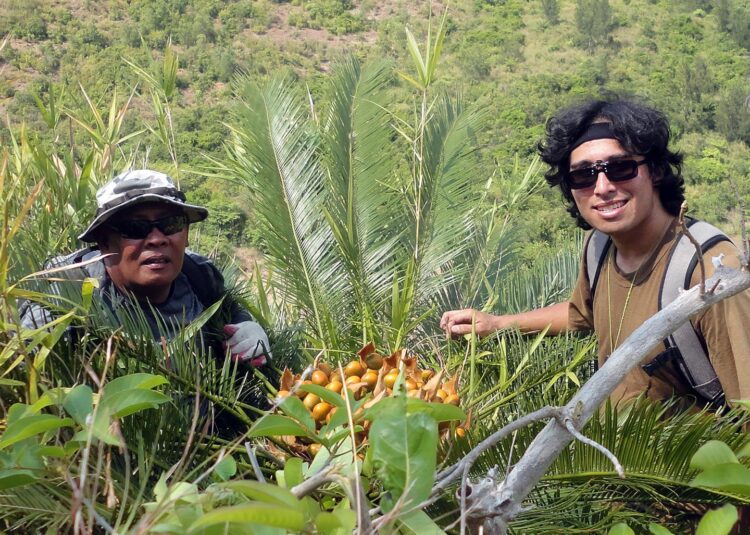Researchers say cycad conservation plans must consider mutualistic relationships

Credit: University of Guam
University of Guam researchers continue to expand knowledge of a unique group of plants called cycads. The world’s contemporary cycad plants depend on small insects for pollination services. The Guam team’s 2017 discovery of the new Cycadophila samara beetle and its pollination of cycads is now contributing to an international effort to more fully understand the intimate relationship between plant and insect.
The culmination of several decades of research on the subject is enabling a consortium of international scientists to describe the taxonomic relationships among the pollinators and their cycad hosts. The most recent compilation is published in the August issue of the journal Insecta Mundi, published by the Center for Systematic Entomology.
The most important step in biodiversity conservation is to first understand what is out there that is in need of protection, and the ongoing work on cycad pollinators highlights how little is known about the biodiversity of island habitats. How can the insular ecosystems of the islands of Guam and the Philippines be conserved if all of the biological connections that sustain the native organisms are not understood?
“The contributions from Guam expand the efforts of a synergistic team from India, Thailand, Vietnam, and the United States,” said William Tang, lead author of the article. “The exploratory work of the scientists from the University of Guam has clarified which pollinators provide services to multiple Philippine cycad species.”
Mutually dependent organisms equally threatened
The relationships between the insect pollinators and their cycad host plants are what scientists call mutualisms. The adult pollinators must find a male cycad cone in order to participate in regeneration of the next generation. Similarly, the male and female cycad trees must attract the services of the pollinators in order to adequately produce seeds. Neither organism can persist into the future without the other.
In addition to the beetle pollinating the Philippine cycads, the Guam-based work has led to an unexpected discovery that the Guam cycad tree relies on small moths as the pollinators rather than beetles.
“The cycad pollinators in the Philippines are cute little beetles, but the moth pollinator of the Guam cycad looks like something you might want to flatten with a flyswatter,” said Benjamin Deloso, University of Guam cycad specialist.
Indeed, Guam’s tiny brown moth pollinator largely goes unnoticed while it provides crucial pollination services to ensure the future of the endangered cycad tree.
The Guam team’s extensive cycad research has also identified a native beetle stem borer that relies on the native cycad tree for larval food. These two native insect species that depend on the cycad tree in order to regenerate are no less threatened than the plant species.
Lessons learned for conservation
The continuing expansion of knowledge by the University of Guam research is showing how conservation planning should highlight the interplay among all three organisms, not just the cycad species.
The team’s progress on cycad pollinators illuminates two phenomena that conservationists are expected to understand as they develop conservation plans.
First, linkages between organisms may break down and stop functioning properly if the population of one of the partners in the mutualism declines. For example, even if the cycad tree population persists in Guam’s forests, if the intimate relationship between the tree and the moth pollinators becomes threatened, this may cause a subsequent collapse in the population of both native species.
Second, the concept of co-extinction should inform conservation decisions by honoring the fact when one of the organisms becomes locally extirpated, the second organism will also inadvertently become extirpated.
Global loss of flying insect pollinators
The timing of the new cycad pollinator publication comes at an age when documented global loss of flying insect pollinators is being highlighted as the precursor to an ecological Armageddon. Researchers have found that more than 40% of the world’s insect species are at risk of extinction in the near future due to human activity. The value of insect pollination of crops is estimated to be at least $3 billion annually in the United States alone.
“Almost 90% of the world’s flowering plants depend on animal pollinators,” Deloso said. “Since most of the food crops of the world are flowering plants, the need to conserve the world’s pollinators cannot be overstated.”
###
Further Reading:
Tang, Xu, Marler, et al. 2020. “Beetles in cones of cycads of the northern hemisphere: diversity and evolution.” Insecta Mundi 0781:1-19. https:/
“Beetle discovery highlights co-extinction risk.” Western Pacific Tropical Research Center 2017 Annual Report. Page 7. https:/
Media Contact
Jonas Macapinlac
[email protected]
Original Source
https:/





